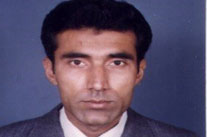
Climate Change Impacts: Changing Livelihoods and Agricultural Practices in Bangladesh’s Chars
By: Md. Arfanuzzaman - 01 Apr 2016
In Bangladesh, nearly 2.5 billion tonnes of sediment flow through three mighty rivers—the Ganges, the Brahmaputra and the Meghna—each year. All three rivers deposit portions of the sediment flowing through their waters along their respective riverbeds. Over the years, the accumulation of these deposits has resulted in the creation of many shoals or river islands in the river basin areas. These river islands are known as ‘char’ in Bengali. Home to more than 600,000 dwellers, Bangladesh’s many chars are prone to severe erosion and floods.

Solar-wind Electricity Generation: Opportunities and Challenges
By: Anju Pandit - 30 Mar 2016
Nepal is a country that has been classified as one of the least developed in the world, but in terms of potential for developing renewable energy, it is one of the richest. A solar-wind assessment study conducted by the Alternative Energy Promotion Centre (AEPC) in 2008 showed that there are remarkable possibilities for solar-wind harvesting in Nepal.

The Bihar Paradox: Floating Villages, Floating Lives
By: Giovanna Gioli and Amina Maharjan - 28 Mar 2016
The constellation of precarious settlements inside the embankments, their materialisation and sudden disappearance have been powerfully compared to diyas, oil lamps, floating from one place to the other, following the moody course of the Gandaki River. A displaced community relocates in an equally (if not more) vulnerable strip of land inside the embankment.

Dreaming of a Better Life Outside the Gandaki Embankment
By: Amina Maharjan and Giovanna Gioli - 28 Mar 2016
There is very little stability to be found in Chharki, a small revenue village in Western Champaran, Bihar, India. As a village of displaced people who have built themselves a community within the embankments of the Gandaki River, it exists at the mercy of the river that also nourishes its land, makes habitation and sustenance possible for its people.

How the changing pattern of snowfall is affecting the livelihoods of farmers in Murree Hills
By: Aneel Piryani - 10 Mar 2016
Murree Tehsil of District Rawalpindi is approximately 50 km from the twin cities of Rawalpindi and Islamabad. This area was famous for fruit production such as apples, apricots, walnuts, and Asian pears in abundance. However, fruit production has strongly decreased in the past decades, and it appears climate change could be one of the reasons.

Heat Stress and Effective Heat Adaptation Measures
By: ValérieEijrond, Health and Society Master’s Student, Wageningen University - 12 Feb 2016
I started working as an intern at the HI-AWARE Project in Alterra in September 2015 where I was assigned to a four-month research project entitled ‘Heat Stress and Effective Heat Adaptation Measures’. I carried out a literature review leading to an inventory and an analysis of globally existing heat adaptation measures for households in urban areas.

Farmers adapting to water shortages in Khaba Baralla, Pakistan
By: Aneel Piryani and Naveed Mustafa Rana - 08 Jan 2016
Initially an On Farm Water Management Project (OFWM) of the Government of Punjab, this land has been turned into cultivable land with the installation of a high-efficiency irrigation system. On this farm, Mr Jamal is trying to grow various crops and fruits.

Micro-hydropower systems for improving livelihoods
By: A Wahab Siyal, Bashir Ahmad, Irfan Ali and Tariq Mustafa - 07 Jan 2016
A recent initiative undertaken by the Pakistan Agricultural Research Council (PARC) team to explore micro-hydropower systems proved both interesting and informative for the team. To cope with the impacts that climate change has had on resource-poor communities

Mini grid synchronisation: the way forward for sustainable Micro Hydro Projects
By: Anju Pandit - 30 Nov 2015
Baglung district is famous for its suspension bridges. And as the name implies, the district is endowed with plenty of water resources. Of late, Baglung has become a great example for how Micro Hydro Power (MHP) development and mini grid synchronisation can be implemented. The early success should pave the way for long-term sustainability of MHPs in the district…

An Exploratory Visit to the Mountainous Regions of the Upper Gandaki Basin in Rasuwa
By: Sangita Dandekhya, ICIMOD - 09 Nov 2015
Various organisations, such as Lumanti, Parivartan Nepal, World Jewish Relief Fund, etc., have been working on issues pertaining to shelter, WASH and livelihoods, in the aftermath of the earthquakes…
